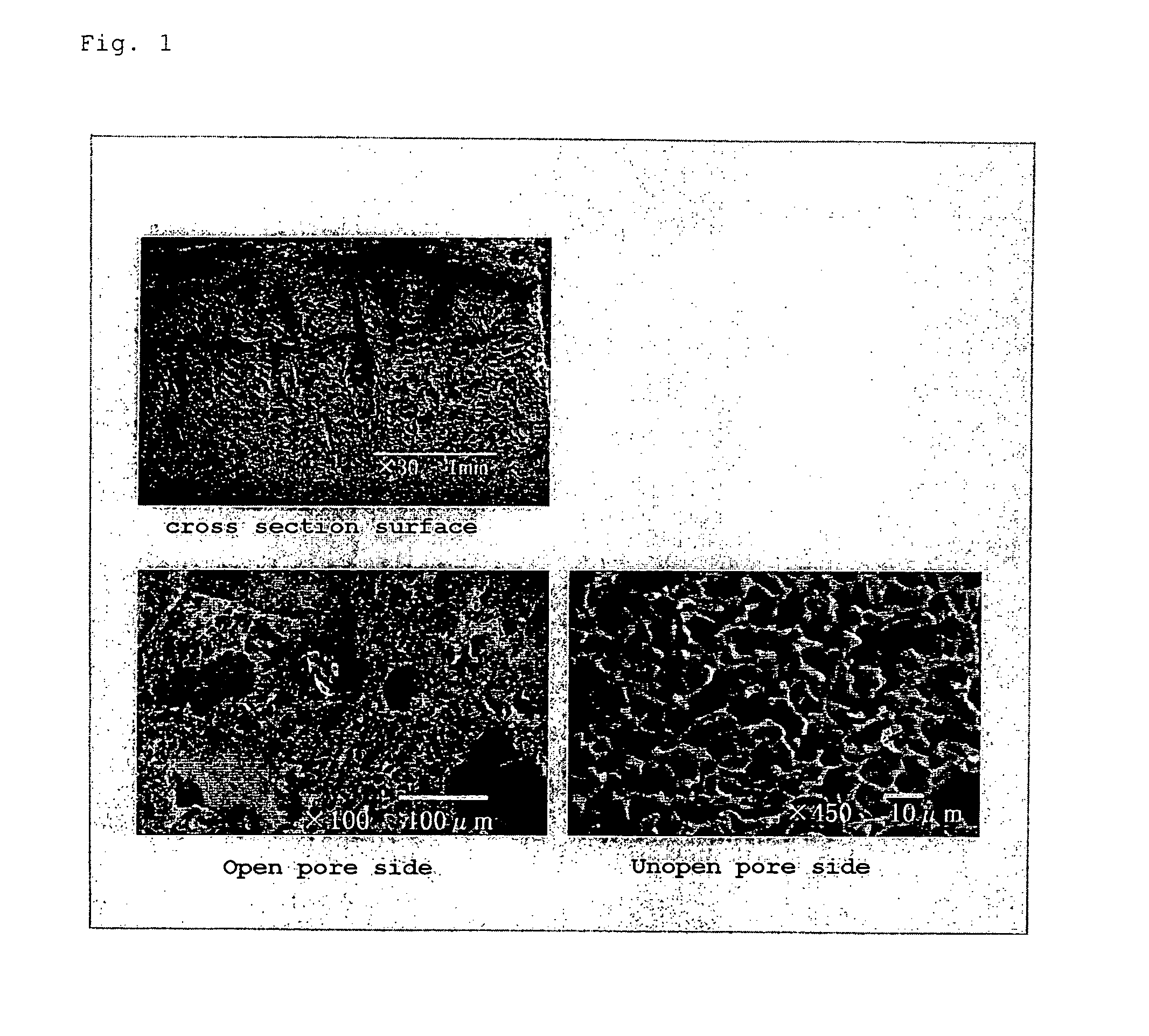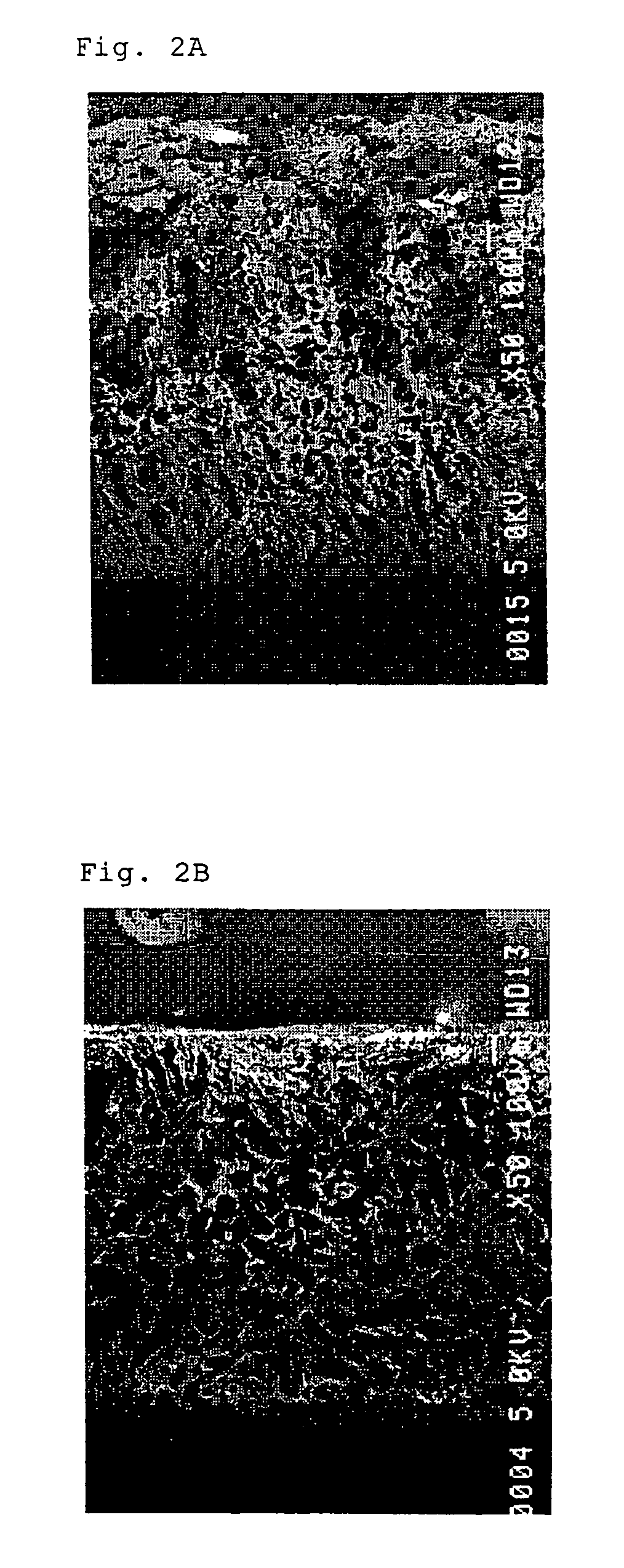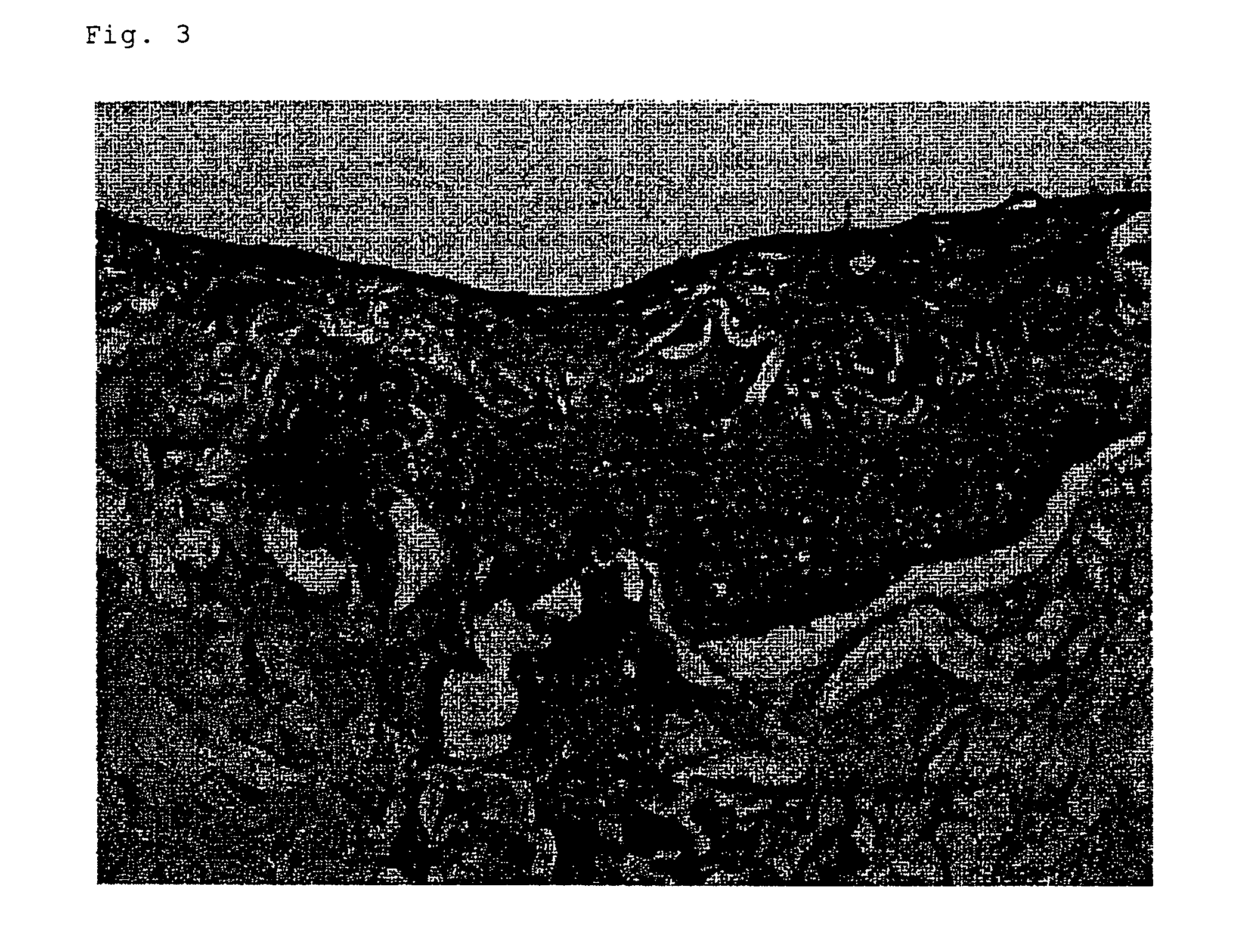Support for tissue regeneration and process for producing the same
a tissue regeneration and tissue technology, applied in the field of 3d porous scaffolds, can solve the problems of insufficient medical treatment for organ transplantation, insufficient cell grafting ability, and inability to achieve the effect of preventing invasion and excellent cell grafting ability
- Summary
- Abstract
- Description
- Claims
- Application Information
AI Technical Summary
Benefits of technology
Problems solved by technology
Method used
Image
Examples
example 1
Process for Producing a PLGA Scaffold
a. A Process for Producing a PLGA Scaffold Subjected to Pore-opening Treatment by a Salt Elution Method
[0129]A lactic acid / glycolic acid copolymer (weight ratio=75:25), which is a biocompatible material, was dissolved in dioxane, and the concentration of said copolymer was adjusted to 4% by weight. In a mold produced with a glass-plate, trisodium citrate in which those having a diameter of about not more than 212 μm and about not less than 850 μm were removed using sieves having a diameter of 212 μm and a diameter of 850 μm was dispersed as a granular salt so as to be about 0.05 g / cm2. The above prepared solution was poured therein so as to be 2 mm in thickness, and the mold was covered with a glass plate. Then, the mold was placed in a freezer at −40° C., and blocks (objects) cooled at −40° C. were brought into contact from both sides to rapidly freeze the mold (at a cooling rate of 5° C. / minute). After the freezing, dioxane was removed by dryin...
example 2
Production of a Cultured Cartilage Using a PLGA Scaffold
[0135]A cartilage tissue was sampled from the knee joint of a Japanese Saanen goat of about 1 year old to separate a cartilage cell with collagenase. The cell was cultured using Ham's F-12 medium containing 10% bovine fetal serum and ascorbic acid with the final concentration of 50 μg / ml. The cartilage cells subjected to passage culture for 2 times were added to a 96-well tissue culture plate in 1×106 per well and subjected to micromass culture for overnight (about 16 hours) to be used for producing a cultured cartilage.
[0136]The PLGA scaffold produced by a salt elution method of Example 1-a and sterilized with γ-ray at 25 KGry was placed in the above medium, and deaerated under reduced pressure to spread the medium on the scaffold surface. Then, the cartilage cells subjected to micromass culture were seeded at the density of 1×107per 1 cm3 of the scaffold. The scaffold seeded with the cartilage cells was placed in a culture pe...
example 3
Comparison of Cell Retention Ability of the PLGA Scaffold Produced by the Method According to the Invention
[0139]Cartilage cells were seeded on the PLGA scaffold (referred to as scaffold A) produced by a salt elution method of Example 1-a, and the cell retention ability was examined. The cartilage cells were prepared and seeded on the scaffold by the method described in Example 2. scaffold A was formed to a disc shape having 10 mm in diameter and 1 mm in thickness (volume 78.5 mm3), and 30 μl of a cartilage cell suspension prepared to have a cell concentration of 5×107 cells / ml was seeded respectively thereon. The resultant was allowed to stand for 1 hour on a culture petri dish, and then the number of cells leaked from the scaffold was counted (Table 1).
[0140]As shown in Table 1, in scaffold A, the number of leaked cells detected in the medium was 0.033% of the seeded cells. This was significantly higher than the cell retention ability of the PLGA scaffold (scaffold B) produced by ...
PUM
| Property | Measurement | Unit |
|---|---|---|
| pore diameter | aaaaa | aaaaa |
| pore length | aaaaa | aaaaa |
| pore length | aaaaa | aaaaa |
Abstract
Description
Claims
Application Information
 Login to View More
Login to View More - R&D
- Intellectual Property
- Life Sciences
- Materials
- Tech Scout
- Unparalleled Data Quality
- Higher Quality Content
- 60% Fewer Hallucinations
Browse by: Latest US Patents, China's latest patents, Technical Efficacy Thesaurus, Application Domain, Technology Topic, Popular Technical Reports.
© 2025 PatSnap. All rights reserved.Legal|Privacy policy|Modern Slavery Act Transparency Statement|Sitemap|About US| Contact US: help@patsnap.com



